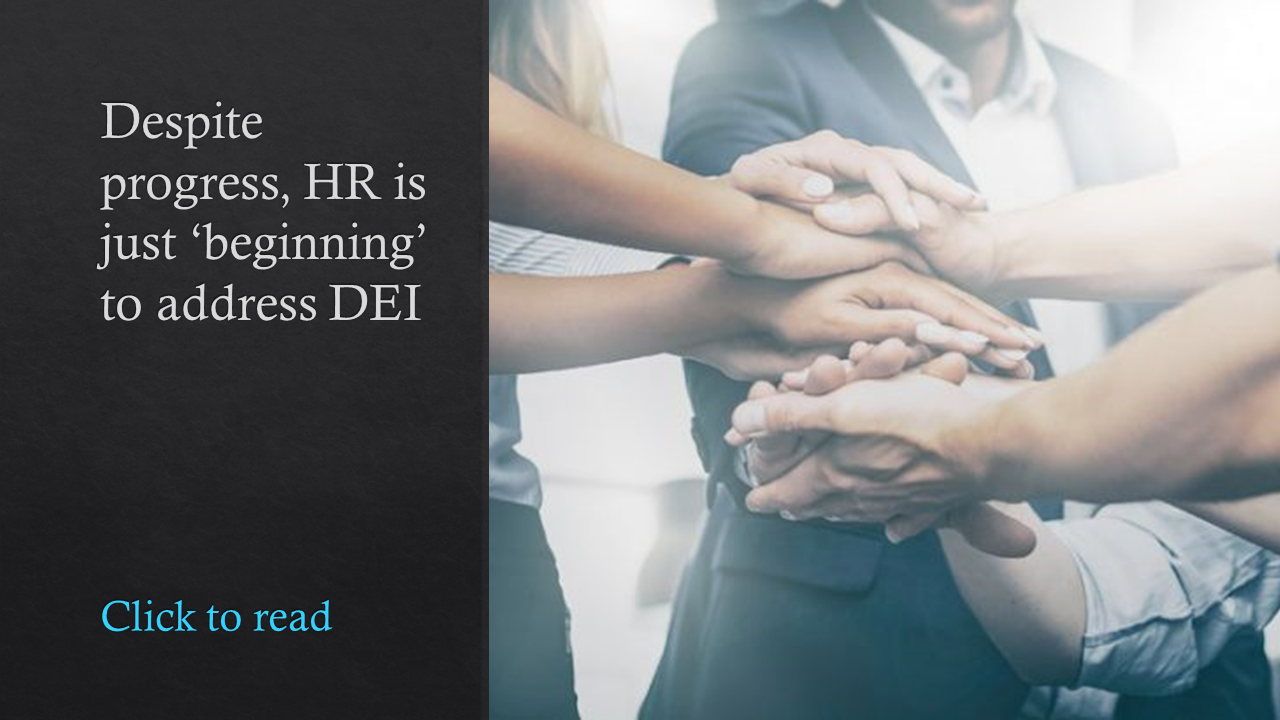American organizations are making noticeable strides to deliver diversity, equity and inclusion gains in the workplace–though, admittedly, not entirely diverse and equitable: Many still struggle with the inclusion portion.
“We don’t really have a reliable way to know if we’re getting any better with the I [for inclusion] and if we’re getting any better where people are being seen and valued for all,” Marcus Buckingham, head of ADP Research Institute—People + Performance, said this week during ADP’s virtual Inclusion Summit panel session titled “Inclusion at Work: Knowing Where We Stand and How We Can Do Better.”
To combat that challenge, in his “Measuring the I in DEI” report, Buckingham and his team crafted 12 questions to ask American workers about their feelings of connection to work and sorted the responses into three categories: strong connection at work (21%), neutral connection (68%) or not connected (11%).
Researchers also found the following:
- White respondents are twice as likely as Black, indigenous and people of color to be strongly connected at work.
- People who do not identify as LGBTQ are twice as likely to be strongly connected at work compared to those who do.
- 21% of women reported a strong connection at work, which was the same figure as men.
“People who are connected at work are not connected because of the great gear or swag they get from the company. They’re connected to other people,” noted Nela Richardson, chief economist at ADP.
HR’s role in DE&I

Fostering those connections means a greater emphasis on inclusion, Buckingham said. In order to grow inclusion in DE&I efforts, HR leaders have to align these efforts to the business’ needs.
“We’ve got to tie this to the opportunity that we see in front of us as an organization, and we’ve got to hold people accountable for it,” said Bob Lockett, chief diversity and talent officer at ADP.
HR leaders need to make DE&I part of compensation practices and convince business leaders that this is tied to the company’s overall success. Leaders must realize that American families are increasingly diverse, and this has a profound impact on the workforce, said Richardson.
Related: How to maximize the power of excellent HR service quality
“The consumer is growing in its diversity and, to serve that market, you need people at the table who know what that market is about. Businesses need to know their customers,” she said. “And that means having a connected workforce.”
Ultimately, Lockett said, HR has a responsibility to push senior leaders to make inclusion a significant focus of their DE&I work.
“[HR should] help an organization see their future and focus on what the possibilities are and where the markets might be. Let’s take all of the data and the insights–but then you’ve got to take action,” he said.
Buckingham admitted that a “silver bullet” to solve inclusion issues does not exist.
“[However,] with a deeper understanding of the psychological ingredients of feeling connected at work and how connection feeds into the ‘I’ of DE&I, we will have some way of understanding those ingredients,” he said.



